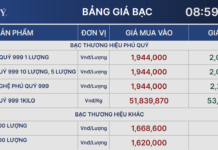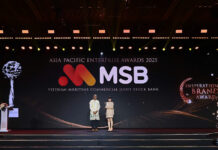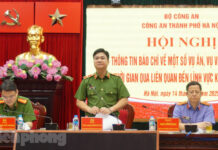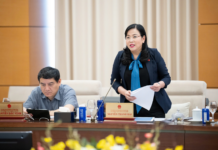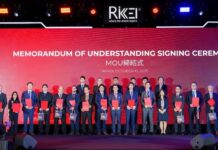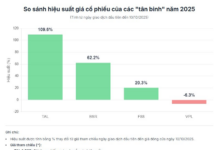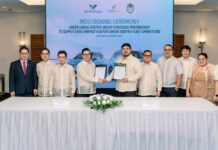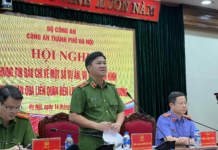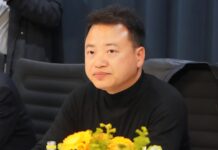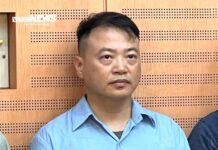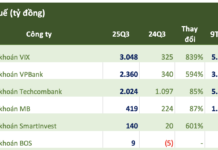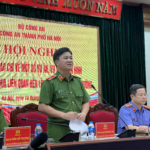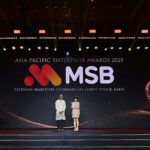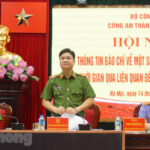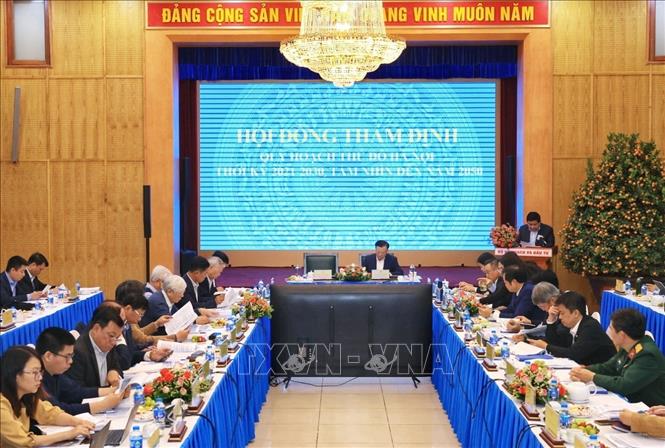
Specifically, there must be new approaches, new thinking, expanded development vision and clear implementation roadmap. In addition, development must have focus and emphasis; based on regional linkages to create a ripple effect to promote the economy and correspond to the position, development growth of the Red River Delta region and the whole country.
The capital city of Hanoi is the political and administrative center of the country, the largest center in the country in terms of economy, culture, science, education and international trade. However, the city still faces some difficulties, challenges and congestion that need to be addressed.
In particular, according to Minister Nguyen Chi Dung, the economic position of Hanoi is tending to decline compared to other provinces and cities in the Red River Delta. In 2022, Hanoi’s GRDP accounted for 42.2% of the Red River Delta region; the GRDP growth rate in 2023 reached only 6.27%, ranking 9th out of 11 in the Red River Delta region; economic structure transformation is still slow, prominent and efficient economic sectors have not been clearly formed.
In addition, the city still faces challenges in technical infrastructure and social infrastructure development. The major issues are traffic congestion, environmental pollution and flooding. The transportation routes of the infrastructure system have not been formed in a coherent manner, especially the lack of north-south and east-west crossroads. The construction of cultural and sports facilities lacks synchronism, connectivity, and has not fully tapped their potential.
Connectivity between Hanoi and the provinces in the Red River Delta, particularly the southern provinces, has not been synchronized. Hanoi has only developed 2 out of 8 planned central axes. Traffic congestions are frequently occurring at the gateways into the capital city. Without a seaport, Hanoi faces constraints in competing in service development, logistics, and affecting the openness of the economy.
At the same time, Hanoi’s population has exceeded the projected level due to natural population growth. It is infeasible to relocate people out of the inner city, creating tremendous pressures on infrastructure and people’s living quality. The terrain is divided by rivers and streams; the weak geology poses challenges to the development of underground works, especially underground spaces.

Proposing ideas for determining priority economic sectors and orientation, and developing sectors and fields, Minister Nguyen Chi Dung posed the question: Economic development does not need to focus on many sectors but focus on a number of sectors with outstanding factors that have a strong impact on the economy. For example, Beijing (China) focuses on developing finance, culture, and artificial intelligence (AI) technology; Bangkok (Thailand) focuses on their strengths in commerce, tourism and healthcare… Similarly, Hanoi can focus on the chip manufacturing, semiconductor, and artificial intelligence (AI) sectors that are currently global trends and have the potential for the city.
“The issues of orienting the development of green industry, digital economy, cultural industry, knowledge economy, circular economy, urban economy… are also strengths and advantages of Hanoi,” Minister Dung said.
In addition, the proportion of industrial development is still modest, accounting for about 24%, not driving Hanoi’s development. The choice of key development sectors must be based on promoting strengths and practical suitability, aiming to match the capitals of surrounding countries and have international stature.

Speaking at the meeting, Chairman of the Hanoi People’s Committee Tran Sy Thanh shared that the Hanoi Capital Planning has a large scale and a comprehensive nature covering almost all fields; it is integrated from many proposed options of sectors and regions. Despite the demanding progress, the Hanoi Capital Planning is being implemented thoroughly, systematically, seriously, and complies with the legal regulations on planning.
Building on the potentials, advantages, and the achieved results in the development over the past time, the Hanoi Capital Planning proposed new and breakthrough points in the development orientation. Specifically, the planning proposes the development goal for the city as an enlightened, civilized, and modern capital, where the essence of the nation and humanity converge; it is the major economic and financial center of the country, with influence in the region; it is a driving force that leads and spreads, promotes the development of the Red River Delta region and the dynamic region of the North. Further, it is the center for science and technology, innovation; leading in education and international standard training; advanced and modern healthcare system. Comprehensive assurance of living conditions; high competitiveness, development level on par with other capitals in advanced countries in the region.
Chairman Tran Sy Thanh said that the planning presents 6 major tasks during the planning period, prominent among which is to completely resolve the problems of pollution in rivers and handle environmental pollution in the Nhuệ and Đáy rivers to ensure safe irrigation water for agriculture. At the same time, to completely solve the problem of flooding in urban areas, propose measures to ensure safety during the rainy season for low-lying terrains. In addition, to fundamentally address traffic congestion at the city’ gateways and urban traffic congestion during peak hours.
The Hanoi Capital Planning also identifies the development direction of important sectors such as aiming to become a leading center in the semiconductor industry, information technology, and AI, biotechnology; developing high-tech agricultural products, leading seedlings playing a leading role in the agricultural development of the northern provinces…
The organization of the development space in the Hanoi Capital with 5 dynamic axes; in which, the Red River is the main dynamic axis, the highlight of the central urban area connecting the urban areas south and north of the Red River, with the aim of forming a cultural space, festivals, culture, sports, developing night-time economic services and accommodation, resorts, elderly care facilities along both sides of the river.
In addition, to effectively exploit the 5 corridors and the Hanoi Economic Belt to truly become a converging hub, a connectivity center, a driving force for internal and regional diffusion. Therefore, it plays an important role in connecting with the provinces, cities in the Red River Delta region and the capital region, the midland region, and the northern mountainous region, aiming for international border gates and seaports; affirming Hanoi as the development force of the region, the growth pole of the country, the gateway of the ASEAN region connecting with China.
Similarly, to harmoniously exploit and reasonably develop the 5 development spaces and develop the model of the direct subordinated cities of the capital into a green, smart, modern, and creative area with specific conditions in terms of governance and institutions to become a dynamic development region of the capital that includes 1 central urban area and 4 cities belonging to the capital. Developing the urban system and organizing the territory of the rural area; developing functional areas and technical infrastructure in a smart, modern direction…
Based on the opinions of the participating members, the Council of Appraisal and the delegates attending the meeting, the planning agencies focused on studying, absorbing and perfecting the Hanoi Capital Planning dossier for the 2021-2030 period and the vision to 2050 to soon report to the National Assembly for opinions and approval as regulated.
The Hanoi Capital Planning for the 2021-2030 period and the vision to 2050 after being approved by the Prime Minister will be a very important basis for all levels, sectors to study, build and implement policies, plans, development programs, and investment projects to develop the capital city’s economy and society by 2030.

